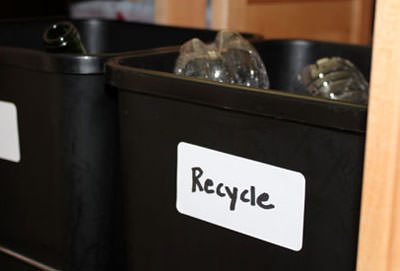
 Photo by Stephanie Staton Sort and weigh your trash, recycling and compost materials, to find out how much trash your household produces and where it’s going. |
As we bustle about planting crops for seasonal eating, taking care of animals and cooking up meals from scratch—all in an effort to live a more sustainable lifestyle—there’s one aspect of the daily farm grind that often gets overlooked: the trash. Even with our eco-friendly mindsets, taking responsibility for how we dispose of our waste takes significant effort that many of us don’t allot enough energy to. Plus, rural residents often face trash hurdles, such as the lack of recycling pick-up services, that get in the way of making environmentally responsible waste decisions.
The amount of waste Americans put into landfills each year is a serious problem, and we farmers can’t skirt the blame. In 2010, the U.S. produced 250 million tons of trash, according to the Environmental Protection Agency, and only a little more than a third of that was recycled or composted. If you want to ensure you’re doing your fair share in keeping the Earth clean, the simplest thing you can do is to examine your trash practices: What do you toss into the trash can, recycling bin and compost pile—and can do more of the latter two options?
A home-waste analysis can easily be performed by weighing the amount of trash, recyclables and compostables your family throws away daily. To do this, find three bins, label them accordingly, and sort your trash. At the end of each day, weigh each bin on a home scale (being sure to subtract the bin weight from the total weight) to determine the amount of waste you accumulate in each category. By analyzing the content over a week or more, you’ll get a good idea of just how much trash you’re producing and how much you could be recycling or composting.
Once you examine how much waste your family produces, take steps to reduce that amount or allocate it to another (more environmentally friendly) bin. For example, if you regularly found apple peels and carrot ends making their way into your trash waste, make sure everyone in your family knows those items can be composted. (Print this guide to compostable materials.) Maybe you discovered a large chunk of what you threw away couldn’t go anywhere other than the landfill. In that case, try buying items with limited packaging: Take cheesecloth to your farmers’ market or grocery to avoid buying packaged cheeses, shop with canvas bags to avoid disposable store-provided ones, and make your own cleaning products from a few simple ingredients to avoid buying a cabinet full of disposable cleaning products—it could even save you a pretty penny!
Once you implement these new practices, perform the analysis again a month or two later to see if you’re on the right track. By making this a yearly or bi-yearly habit, you can keep your family’s home-waste management in check.
For help performing a waste analysis, download the worksheet below.




